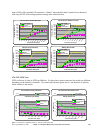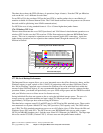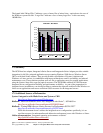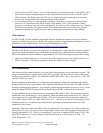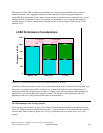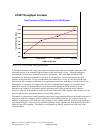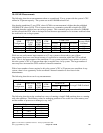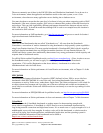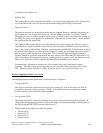Also note that part of the performance increase of an larger system may have come about because of a
reduction in contention within the CPW workload itself. That is, the measurement of the standalone
12-way system required a larger number of users to drive the system’s CPU to 70 percent than what is
required on a 4-way system. The larger number of users may have increased the CPW workload’s
internal contention. With a lower number of users required to drive the system’s CPU to 70 percent on a
standalone 4-way system., there is less opportunity for the workload’s internal contention to be a factor in
the measurements.
The overall performance of a large system depends greatly on the workload and how well the workload
scales to the large system. The overall performance of a large partitioned system is far more complicated
because the workload of each partition must be considered as well as how each workload scales to the
size of the partition and the resources allocated to the partition in which it is running. While the partitions
in a system do not contend for the same main storage, processor, or I/O resources, they all use the same
main storage bus to access their data. The total contention on the bus affects the performance of each
partition, but the degree of impact to each partition depends on its size and workload.
In order to develop guidelines for partitioned systems, the standard AS/400 Commercial Processing
Workload (CPW) was run in several environments to better understand two things. First, how does the
sum of the capacity of each partition in a system compare to the capacity of that system running as a
single image? This is to show the cost of consolidating systems. Second, how does the capacity of a
partition compare to that of an equivalently sized stand-alone system?
The experiments were run on a 12-way 740 model with sufficient main storage and DASD arms so that
CPU utilization was the key resource. The following data points were collected:
y Stand-alone CPW runs of a 4-way, 6-way, 8-way, and 12-way
y Total CPW capacity of a system partitioned into an 8-way and a 4-way partition
y Total CPW capacity of a system partitioned into two 6-way partitions
y Total CPW capacity of a system partitioned into three 4-way partitions
The total CPW capacity of a partitioned system is greater than the CPW capacity of the stand-alone
12-way, but the percentage increase is inversely proportional to the size of the largest partition. The CPW
workload does not scale linearly with the number of processors. The larger the number of processors, the
closer the contention on the main storage bus approached the contention level of the stand-alone 12-way
system.
For the partition combinations listed above, the total capacity of the 12-way system increases as shown in
the chart below.
IBM i 6.1 Performance Capabilities Reference - January/April/October 2008
© Copyright IBM Corp. 2008 Chapter 18 - LPAR 297




